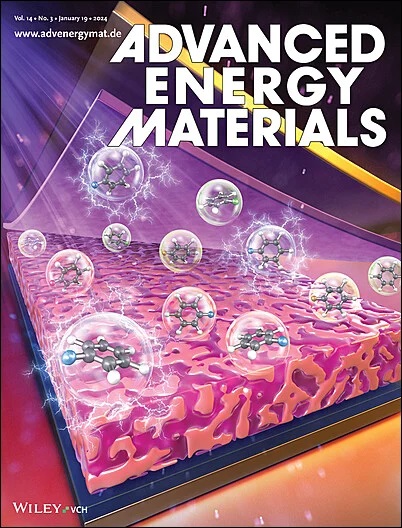Lithium Dendrite Deflection at Mixed Ionic–Electronic Conducting Interlayers in Solid Electrolytes
IF 24.4
1区 材料科学
Q1 CHEMISTRY, PHYSICAL
引用次数: 0
Abstract
Solid state lithium metal batteries using garnet solid electrolytes such as LLZTO (Li固体电解质中离子电子混合导电夹层的锂枝晶偏转
使用石榴石固体电解质(如 LLZTO(Li6.4La3Zr1.5Ta0.5O12))的固态锂金属电池有望大幅提高能量密度和安全性。然而,锂枝晶在高电流密度下的渗透阻碍了其实际应用。最近的研究表明,内部电化学诱导的机械应力足以使锂枝晶扩展,进而使固体电解质断裂。本研究以这一认识为基础,证明应力驱动的树枝状突起传播可通过弱结合内部界面的偏转来控制。这种方法以多层复合材料的断裂力学分析为基础,通过嵌入 LLZTO 的各种层间材料进行研究。树枝状突变的可行性和有效性在还原氧化石墨烯中表现得最为明显,临界电流密度从 0.6 mA cm-2 增加到 3.8 mA cm-2。在这种材料中,与 LLZTO 的弱界面以及夹层的离子-电子混合导电性质似乎都有助于提高性能。通过有限元建模,我们还对多层电解质的力学原理有了更深入的了解。总体结果提供了一个很有前景的概念验证演示,以及重要的通用设计指南,用于创建可实现高性能固态电池的多层固体电解质结构。
本文章由计算机程序翻译,如有差异,请以英文原文为准。
求助全文
约1分钟内获得全文
求助全文
来源期刊

Advanced Energy Materials
CHEMISTRY, PHYSICAL-ENERGY & FUELS
CiteScore
41.90
自引率
4.00%
发文量
889
审稿时长
1.4 months
期刊介绍:
Established in 2011, Advanced Energy Materials is an international, interdisciplinary, English-language journal that focuses on materials used in energy harvesting, conversion, and storage. It is regarded as a top-quality journal alongside Advanced Materials, Advanced Functional Materials, and Small.
With a 2022 Impact Factor of 27.8, Advanced Energy Materials is considered a prime source for the best energy-related research. The journal covers a wide range of topics in energy-related research, including organic and inorganic photovoltaics, batteries and supercapacitors, fuel cells, hydrogen generation and storage, thermoelectrics, water splitting and photocatalysis, solar fuels and thermosolar power, magnetocalorics, and piezoelectronics.
The readership of Advanced Energy Materials includes materials scientists, chemists, physicists, and engineers in both academia and industry. The journal is indexed in various databases and collections, such as Advanced Technologies & Aerospace Database, FIZ Karlsruhe, INSPEC (IET), Science Citation Index Expanded, Technology Collection, and Web of Science, among others.
 求助内容:
求助内容: 应助结果提醒方式:
应助结果提醒方式:


